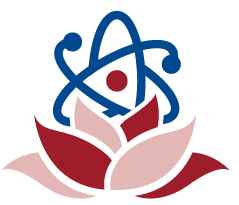| classification system དབྱེ་བསྡུ་མ་ལག | biol. | |
| classification སྡེ་ཚན་དབྱེ་བསྡུ། | biol. The arrangement of animals and plants in taxonomic groups according to their observed similarities | མཐོང་བའི་མཚུངས་ཆོས་གཞིར་བཞག་སྟེ་སྲོག་ཆགས་དང་རྩི་ཤིང་རྣམས་སྡེ་ཚན་དུ་སྒྲིག་པ་ལ་གོ |
| classical signaling རྒྱུན་འགྲོས་འཕྲིན་གཏོང། | biol. | |
| Classical conditioning སྦྱོར་བྱུང་རྐྱེན་འདྲིས། | Pedagog. | |
| class size གྲལ་ཚད། | biol. | |
| class mark གྲལ་རྟགས། | math. The value at the center of a class, found by averaging the upper and lower class limits. | གྲལ་ཞིག་གི་ལྟེ་དབུས་སུ་ཡོད་པའི་གྲངས་ཐང་དེ་ལ་གོ་ཞིང་། གྲལ་མཚམས་མཐོ་ཤོས་དང་དམའ་ཤོས་གཉིས་ཀྱི་ཆ་སྙོམས་གྲངས་ཐང་དང་མཉམ། |
| class limit གྲལ་མཚམས། | biol. | |
| class interval གྲལ་བར། | math. The size of each class into which a range of a variable is divided, as represented by the divisions of a histogram or bar chart. | འགྱུར་གྲངས་ཤིག་གི་ཁྱབ་ཚུལ་ཞིག་སྡེ་ཚན་དུ་མར་བགོས་པའི་སྡེ་ཚན་རེ་རེའི་ཆེ་ཆུང་ལ་གོ་ཞིང་། སྒྲིག་རིས་དང་ནར་རིས་སུ་སྡེ་ཚན་གྱིས་མཚོན་ཡོད། |
| Class agreement འཛིན་གྲྭའི་གྲོས་མཐུན། | SEE Learning | |
| class ཚན་པ། | biol. A taxonomic group comprised of organisms that share a common attribute. It is further divided into one or more orders. | ཐུན་མོང་གི་ཁྱད་ཆོས་ཡོད་པའི་སྐྱེ་དངོས་མང་པོས་གྲུབ་པའི་དབྱེ་བསྡུའི་སྡེ་ཚན་ཞིག་ལ་གོ་ཞིང་། འདི་གྲལ་གཅིག་གམ་དུ་མར་དབྱེ་ཡོད། |
| clarinet ཕྲ་གླིང་། | phys. A woodwind instrument with a single-reed mouthpiece, a cylindrical tube with a flared end, and holes stopped by keys. | མདོང་དབྱིབས་ཀྱི་སྦུ་གུའི་ཁ་ཐེར་ཐེར་ཡིན་ཞིང་། པི་པི་གཅིག་དང་ལྡན་ལ། ཨི་ཁུང་རྣམས་མཛུབ་ཐེབས་ཀྱི་བཀབ་པའི་ཤིང་གི་འབུད་བྱེད་རོལ་ཆ་ཞིག |
| clarification གསལ་བཤད། | sci. method The action of making a statement or situation less confused and more comprehensible. | གཏམ་བཤད་ཅིག་གམ་གནས་སྟངས་ཤིག་མགོ་རྙོག་ཇེ་ཆུང་དང་གོ་རྟོགས་བྱ་ཇེ་བདེ་རུ་གཏོང་བའི་བྱ་བ་ལ་གོ |
| cladogram ཚོ་རིས། | biol. A branching diagrammatic tree used in cladistic classification to illustrate phylogenetic relationships. | ཚོ་བ་རྣམས་སྡེ་ཚན་དུ་དབྱེ་འབྱེད་བྱེད་པའི་སྐབས་སུ་རིགས་ཁུངས་ཀྱི་འབྲེལ་བ་སྟོན་པའི་ཆེད་དུ་སྤྱོད་པའི་ཡལ་ག་མང་བའི་དཔེ་རིས་ཤིག་ལ་ཟེར། |
| cladist ཚོ་བྱེད་སྨྲ་བ། | biol. One who classifies organisms according to the principles of cladistics. | ཚོ་འབྱེད་ཐབས་ལམ་གྱི་རྩ་དོན་གཞིར་བཟུང་སྟེ་སྐྱེ་དངོས་རྣམས་སྡེ་ཚན་དུ་དབྱེ་འབྱེད་བྱེད་མཁན་གྱི་གང་ཟག་ལ་ཟེར། |
| cladism ཚོ་འབྱེད་རིག་པ། (ཚོ་བྱེད་རིག་པ།) | biol. A method of classification of animals and plants according to the proportion of measurable characteristics that they have in common. It is assumed that the higher the proportion of characteristics that two organisms share, the more recently they diverged from a common ancestor. | སྲོག་ཆགས་དང་རྩི་ཤིང་གི་ཚད་འཇལ་རུང་བའི་ཐུན་མོང་གི་ཁྱད་གཤིས་ཀྱི་སྡུར་ཚད་ལ་གཞིགས་ནས་སྡེ་ཚན་དབྱེ་འབྱེད་བྱེད་པའི་ཐབས་ལམ་ཞིག་ལ་གོ སྐྱེ་དངོས་གཉིས་ཀྱི་ཐུན་མོང་གི་ཁྱད་གཤིས་ཀྱི་མཚུངས་ཚད་ཇི་ཙམ་ཆེ་བ་ཡོད་ན་སྐྱེ་དངོས་དེ་གཉིས་དེ་ཙམ་གྱིས་ཉེ་བའི་ཐུན་མོང་གི་མེས་པོ་ཞིག་ནས་མཆེད་པར་ཚོད་དཔག་བྱེད། |
